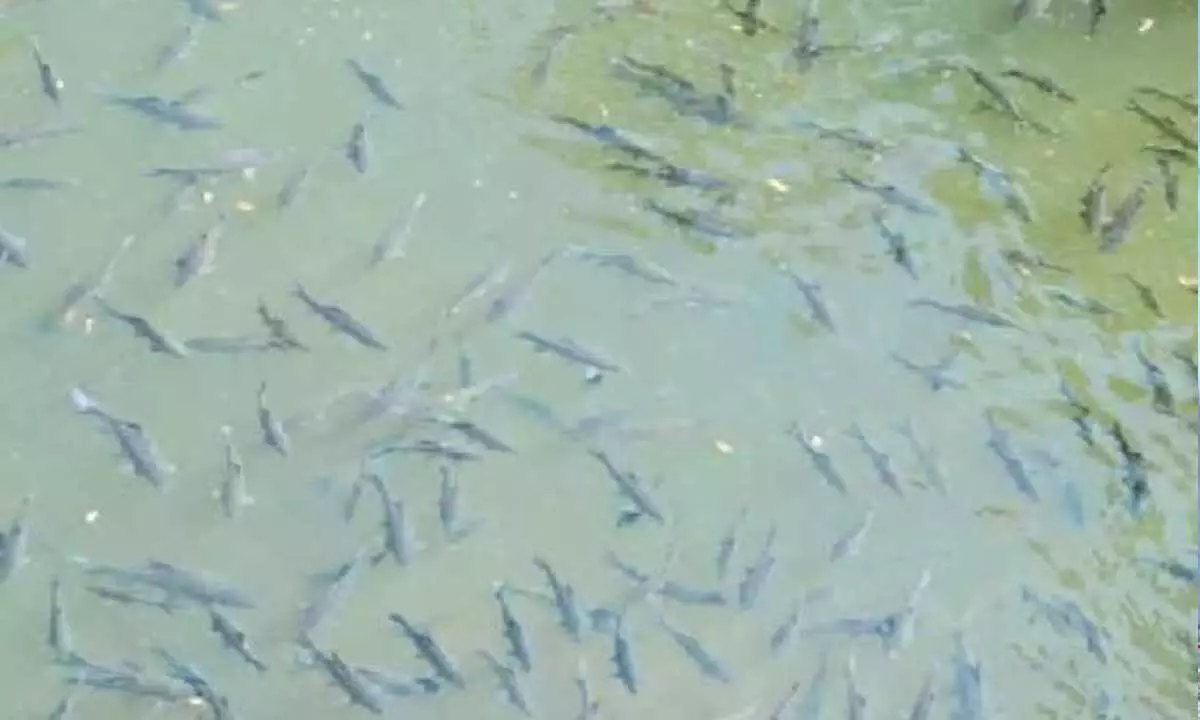Farmers earning income from pisciculture amid drought

Despite facing a drought this year, Chamarajanagar district has witnessed a satisfactory pisciculture season with the successful seeding of 36.87 lakh young fishes in various lakes.
Chamarajanagar: Despite facing a drought this year, Chamarajanagar district has witnessed a satisfactory pisciculture season with the successful seeding of 36.87 lakh young fishes in various lakes. The district, grappling with water scarcity, managed to overcome challenges and sustain fish farming activities.
While this year's achievement is lower compared to the previous year, which saw abundant rainfall, officials note that the lakes weren't frozen, and the impact of the drought on fish farming has been minimal. In a reassuring statement, officials emphasized that despite the district being added to the drought list, there hasn't been a significant threat to fish farming.
Fish fry are strategically planted in ponds with a water depth of at least 4 to 5 feet, ensuring that water levels remain consistent for at least 8 months. Lakes with insufficient water depth are unsuitable for fish farming, and even if water levels drop after sowing, it hampers the growth of fish. Therefore, lakes with water levels above 5 feet for a minimum of 8 months are chosen for fish farming.
In the current year, due to the lack of rainfall, numerous lakes suitable for fish farming faced water shortages. Nevertheless, 67 lakes were successfully seeded, resulting in the production of 4540 tonnes of fish. Despite the challenges posed by the drought, this achievement is considered satisfactory.
The district Fisheries Department oversees a total of 92 lakes covering an area of 5714 hectares for fish farming, along with 155 village panchayat lakes spanning 1734 hectares. Additionally, fish farming occurs in the Suvarnavati, Chikkahole, and Gundal reservoirs covering 885 hectares, along with 16 private dams. The district engages in fish farming of various species, including Katla, Rohu, Mrigal, common gende, and salgende. Among these, Katla and Rohu are the most commonly cultivated species. The Fisheries Department follows a tender process for fish farming in reservoirs and lakes, leasing out 21 lakes and conducting auctions for 31 lakes. The department generates revenue through contracts, auctions, and tenders, with a total income of 26.54 lakh rupees this year.
Out of the 92 fishable lakes, 70 were targeted for fish farming this year, with 67 lakes successfully undergoing fish hatching. While the achieved seeding of 36.87 lakh fish fry falls short of the target of 56 lakh, the district still managed to produce 4540 tons of fish. The district boasts a total of 5822 fishermen who actively contribute to the annual fish farming and production in the region.














